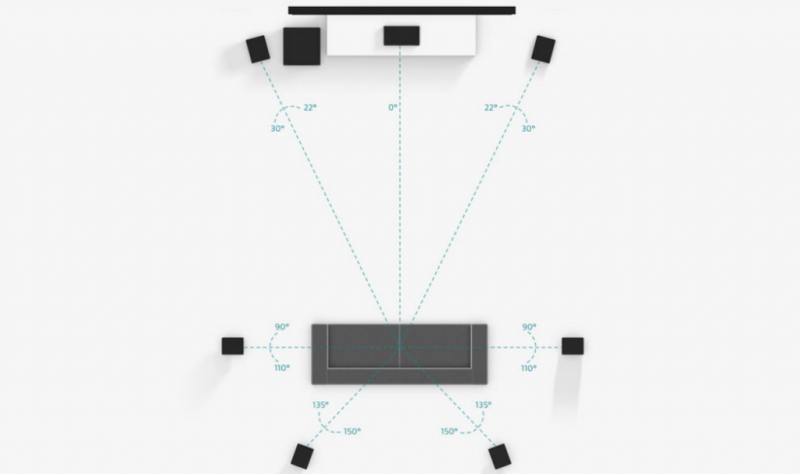Speaker Overkill – How to Know You’ve Got Too Many
It’s crazy how many times I’ve read people asking if the number of speakers they are planning for their theater is “speaker overkill.” I’ve seen 5.1 systems described as “overkill” an as well as 11.4.6 systems. But what really constitutes “speaker overkill?” We’ve got an answer.
It’s Not About the Absolute Number of Speakers
As you’d expect, “overkill” isn’t about the total number of speakers. Movie theaters sometimes have dozens of speakers. You actually can’t see many of the speakers because they are hidden inside the ceiling or behind the acoustically transparent screen. But they are there.
Home theater is the same. The number of speakers that constitute “overkill” isn’t based on some absolute number. It’s based on the size of the room (partially) and how well you can place your speakers. Let’s explain.

Proper Placement is Key
There are many sources of information about where and how to place your speakers. One of the more definitive sources is Dolby. Even though we have some issues with their recommendations, generally speaking, they know where you can place your speakers for the best surround sound. It isn’t about number of speakers as much as it is about angles.
If you look at the Dolby diagrams, you’ll see there are recommended ranges for where you can place each speaker (see image above). You’ll know you are approaching speaker overkill when you have to place speakers outside those ranges. That may be because of the layout of your room and furniture, or it may be because your room is so small (or you are sitting in such a way) that you are forced to place speakers non-optimally. It is always the case the few speakers placed optimally will sound better than more speakers placed non-optimally.
Channel Separation
Even if you can place all your speakers within Dolby’s recommended ranges, if they are physically too close to each other, you won’t get good channel separation. In the above image, imagine that the surround and surround back speakers are placed at the optimal angles but as close to the couch as possible. We see this often in rooms where the couch is placed very near a back wall. The angles may be correct, but the speakers are so close to each other that it will be impossible for your ear to separate them from each other.
Our rule of thumb is that each speaker should be no closer than five feet from another speaker. This excludes the center speaker which is often slightly closer to the left and right speakers. But for surround, surround back, and overhead speakers, they should have at least five feet of distance from each other. If you cannot place them so that they are at least five feet apart, then you should eliminate one set of speakers.
Take Away
Having more speakers in your system can increase immersion and your sense of realism when watching a movie or show. But more isn’t necessarily always better. Proper placement and adequate space between speakers are important for channel separation. Fewer speakers placed properly will always sound better than more speakers with poor positioning. Speaker overkill is when you try to shoehorn in too many speakers into a room. It won’t sound better.


